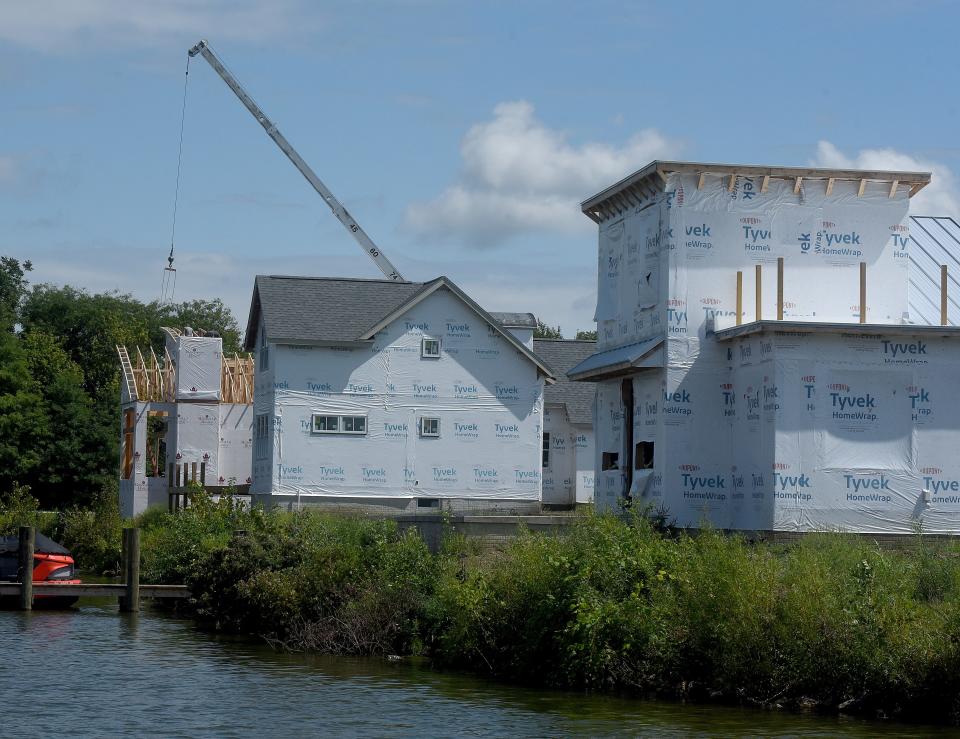Grow Licking County prepares for faster growth than ever imagined with Intel
NEWARK − When local officials chose the name Grow Licking County for the fledgling public-private partnership a decade ago, they certainly envisioned the county would grow. That was the goal after all.
But nobody could have envisioned the pace of growth that certainly lies ahead for a county that will be home to Intel Corporation's $20 billion computer chip manufacturing facility on 1,000 acres of Jersey Township land just south of Johnstown that has been annexed into New Albany.

It will be the largest commercial development in Ohio history, employing 3,000 Intel employees, 7,000 construction workers and thousands more employed throughout central Ohio by Intel suppliers. And the development could grow into a $100 billion facility with eight factories, instead of the two under construction now.
The most recent meeting of Grow Licking County showed the challenges ahead that may not be growing pains, but certainly qualify as growing strains.
Housing will be needed for all the workers coming to Licking County. Roads will need to be improved to get the new workers from their home to the job . And, transit services will be needed to provide alternate transportation options.
More:Central Ohio housing boom comes to Buckeye Lake
Grow Licking County Executive Director Alexis Fitzsimmons said GLC is investigating the possibility of doing a housing study and may partner with the United Way of Licking County.
“We need housing for residents in every stage of their life,” Fitzsimmons said. “Young professionals, young families, starter homes, condos, single-family homes.”
Robert O'Neill, president and owner of real estate development company Southgate Corporation and a GLC board member, said the county's housing needs are great, especially multi-family housing.
“There is a lack of apartments in the pipeline that I’m aware of," O'Neill said. "I think the study makes a lot of sense. Hopefully, it will look not just at single-family, but multi-family. Many times, multi-family (residents) leave to invest in single family, but there needs to be a starting point. And multi-family really serves as that. I think multi-family is clearly way behind.”
Jim Roberts, a GLC board member and vice president of Hull and Associates civil engineering, land surveying, environmental and energy firm, said multi-family housing is the despised by many.
“I think developers are ready to just swarm into Licking County and are capable of doing that," Roberts said. "I think the water and sewer and roadway challenges, while huge, are surmountable. But I’ve sat in a couple meetings where I’ve just sort of heard some 1970s thinking about growth.
“Some of the local governments are just horrified at the idea of apartments. They’re thinking of the old Section 8 housing. I don’t know how we impact that, how we influence that, how we make them understand that could be a real positive thing. I think that’s a huge challenge."
Licking County Commissioner Duane Flowers, a GLC board member, said, "The housing study needs to be done, just because we have no clue of the needs for water and sewer, roads and bridges. It all fits together."
Mark Johns, mayor of Heath and a GLC board members, said he has argued for years that Licking County needs housing of all types, well before Intel's arrival.
Road improvements are another major issue for Licking County, especially around the Intel development site. Some county officials were frustrated immediately after the Intel announcement when the state put the focus on improving roads in Franklin County, not Licking County.
Roberts, chairman of the GLC infrastructure committee, said the state may be paying a little more attention to Licking County roads.
“I think we made some positive strides with ODOT," Roberts said. "They’re now using the MORPC 20-minute drive-time (from Intel site) map as a basis for some decision-making. If you remember, all their traffic studies basically talked about all the traffic to and from Intel was going to be from the west. We don’t agree with that even a little bit.”
Roberts said the 20-minute map includes much of Licking County, including Heath and Hebron.
"While it’s a small step, we feel like it was a giant step because now ODOT might look at directing some of their funding in places they hadn’t done before.," Roberts said.
Flowers said the county commissioners recently authorized $10 million for the county engineer to repair and rebuild roads and bridges, and another $10 million for Licking County water and wastewater projects.
The results of a water and sewer study will be available next year, Roberts said.
Matthew Allison, interim general manager of Licking County Transit, told GLC that staffing continues to be his biggest challenge. He said there were 50 drivers a few years ago, and now it’s about half of that. Meanwhile, trips are increasing.
“We struggle with meeting the demand as it continues to increase,” Allison said. “We’ve got a lot of work to do. We got a lot of challenges. The biggest challenge for us right now is staffing.”
Increasing the hourly wage and ending split shifts are two changes to boost employee morale, he said.
“The first thing we had to do was work on the culture and morale internally,” Allison said. “That’s job one. We’ve been working on that with employees.”
Eventually, Allison said, he would like to provide a fixed-route service, or deviated route service, instead of the on-demand, curbside pickup.
740-328-8545
Twitter: @kmallett1958
This article originally appeared on Newark Advocate: Grow Licking County responds to rapidly growing county with Intel

